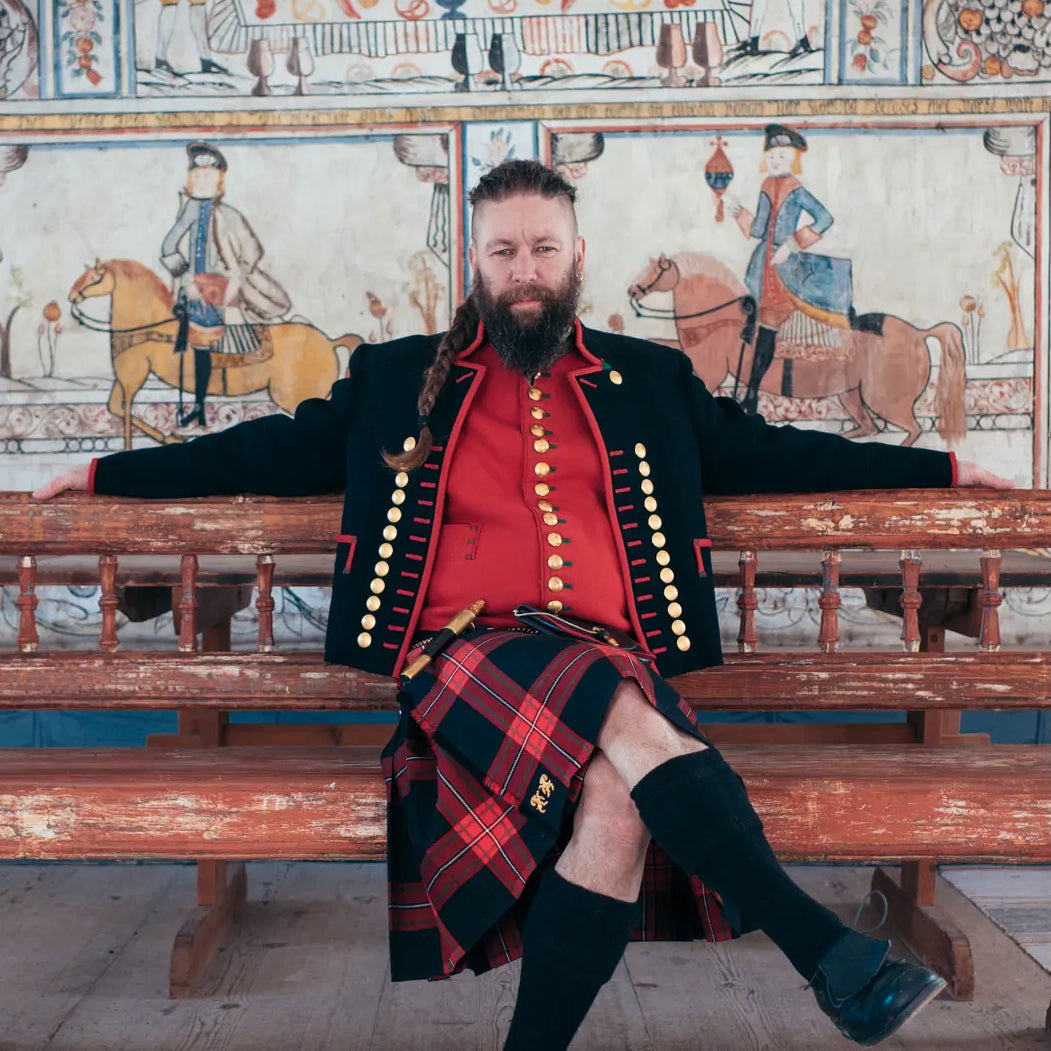
From Liberty to Loden: Tracing British Cloth in the Nordics
If you happen to be in Sweden this month, set aside an afternoon for the Nordiska Museet. British – Ever So Nordic, on view until 2 November 2025, is a museum show that unpicks familiar garments and habits we barely think about, revealing their cross-channel histories. It reminds us that the North Sea has never been a border but a textile thoroughfare along which wool, flax and ideas travelled for centuries between Britain and the Nordic countries.
 Blouse in paisley-patterned Liberty fabric from 2018 and Fabric sample collection from Liberty & co., London 1890s. Peter Segemark, Nordic Museum.
Blouse in paisley-patterned Liberty fabric from 2018 and Fabric sample collection from Liberty & co., London 1890s. Peter Segemark, Nordic Museum.
Textiles have long translated culture, and here they speak fluently across time and tide. Fishermen’s ganseys echo the logic of Scandinavian knitting traditions; British worsted sailed north as Swedish iron travelled south; patterns migrated with people, and techniques evolved in parallel, formed by shared conditions of weather and work. These connections are woven into everyday life, through hems, cuffs and stitches passed from hand to hand.
 Wedding dress 1854, Sweden, Silk. Worn by Svea Beata Myhrman (1816–1910). Peter Segemark, Nordic Museum.
Wedding dress 1854, Sweden, Silk. Worn by Svea Beata Myhrman (1816–1910). Peter Segemark, Nordic Museum.
The narrative begins in the Middle Ages and moves forward in steady, unexpected steps. Here is imported embroidery once used to trim a priest’s cope; there is a silk wedding gown whose whiteness echoes Queen Victoria; there are woollens and tweeds that crossed the sea because they kept bodies warm and dry. Nordiska museet holds one of the largest dress and textile archives in Scandinavia, and these objects are presented as things worn and used rather than museum relics. Each garment carries a story: the reform dress that rejected corsetry; a 1930s golf suit that shows how leisurewear entered everyday wardrobes; contemporary pieces that mix Scandinavian restraint with British punk.
 Chainmail and trousers by Per Götesson from 2018. London-tailored punk-inspired that challenges the men's silhouette. Peter Segemark, Nordic Museum.
Chainmail and trousers by Per Götesson from 2018. London-tailored punk-inspired that challenges the men's silhouette. Peter Segemark, Nordic Museum.
This is not a laundry list of influences but a domestic history: cardigans folded on chairs, tartans in the countryside, trench coats for sudden rain. Seeing a Liberty paisley blouse beside a Hälsingland tartan makes visible the migration of pattern — how motifs are adopted, adapted and made local. As curator Helen Persson notes, many of us own a cardigan or a pair of pyjamas and rarely think where they came from. This exhibition encourages us to ponder...
 The Men's Suit. Peter Segemark, Nordic Museum.
The Men's Suit. Peter Segemark, Nordic Museum.
The exhibition also registers the social life of material culture. Corduroy is still called manchester in Swedish, a linguistic footprint of Britain’s industrial past; waterproof cottons, tweeds and Harris wool appear in both folk costume and tailoring. Influence is never one-way: Nordic designers have reframed British elements through a regional sensibility of garments that are functional, pared back, and attentive to climate.
 Tartan dress with a wide skirt over a crinoline from 1850 worn by Miss Johanna Efraima Wahlbom. Peter Segemark, Nordic Museum.
Tartan dress with a wide skirt over a crinoline from 1850 worn by Miss Johanna Efraima Wahlbom. Peter Segemark, Nordic Museum.
For Selvedge readers, this exhibition goes beyond provenance; it treats textiles as eloquent witnesses. A seam can record a trade route, a faded cuff a climate, a pattern the movement of ideas. Garments speak in frayed hems and precise tailoring, in borrowed tartans and reinvented cuts. Each piece carries the accents of those who shaped it: the merchant, the maker, the wearer. Fashion, here, becomes a map of human exchange.
-
Further Information:
British – Ever So Nordic, on view at the Nordisk Museet, Stockholm, Sweden, until 2 November 2025.
You can read more about the connections between British textiles and the Nordics in Selvedge Issue 127, Aurora.
-
Image Credits:
Lead: Mikael Öst in the Dellenkilten. Scottish wool with a Hälsing check pattern from 2015. Photo: Carl Öst Wilkens
All further images as credited in captions.
